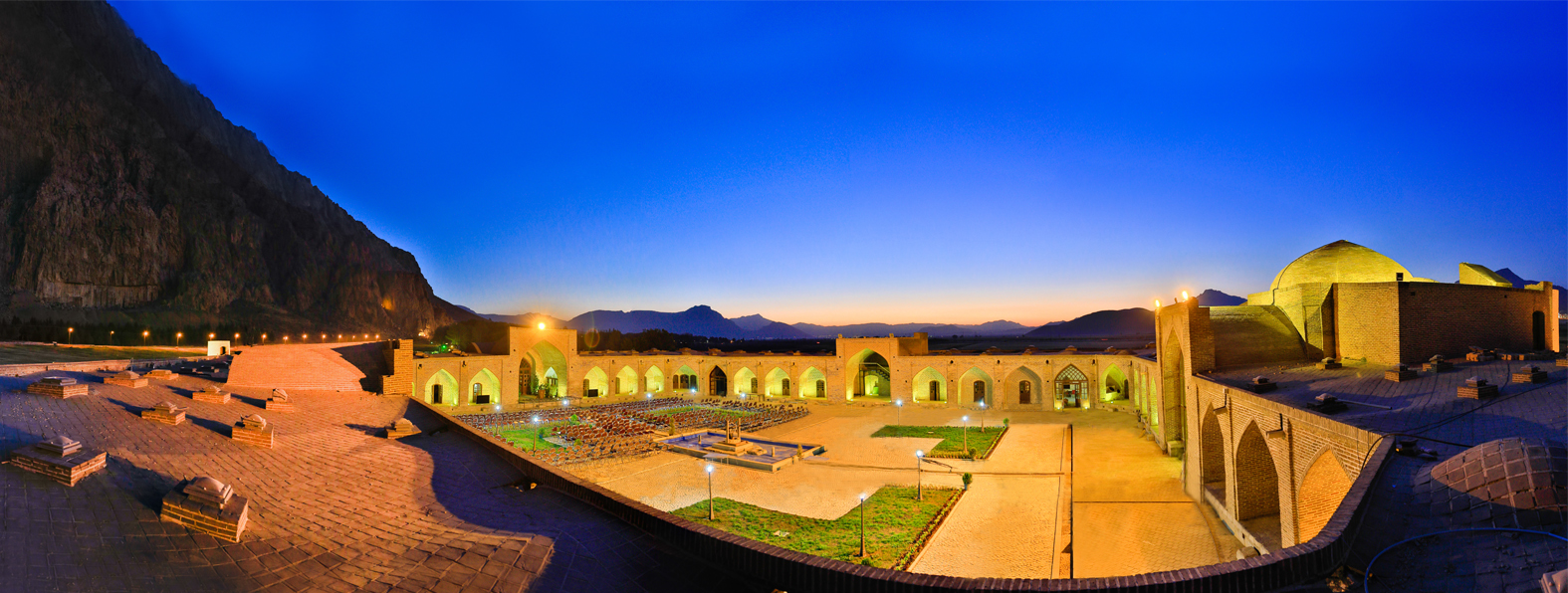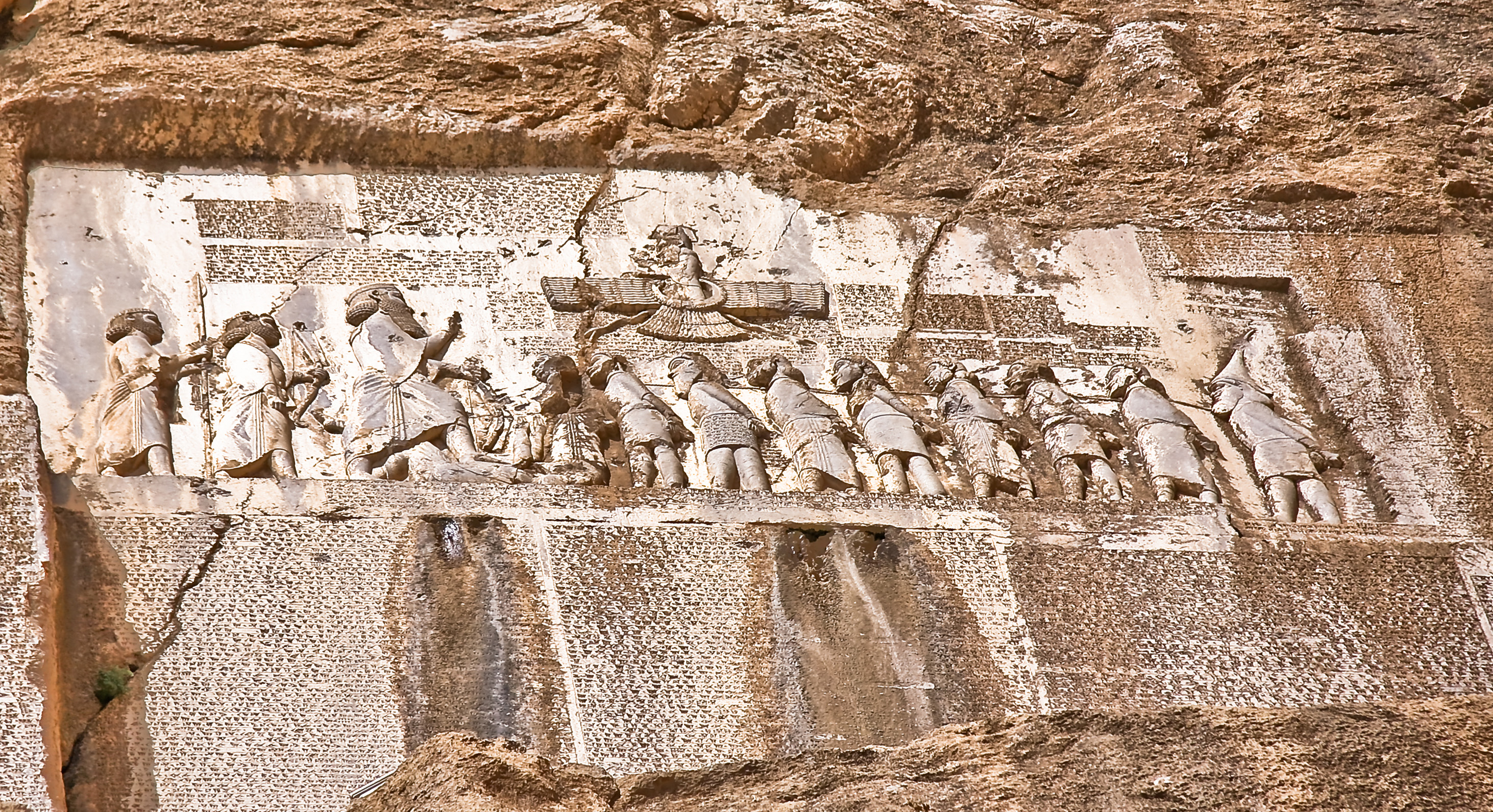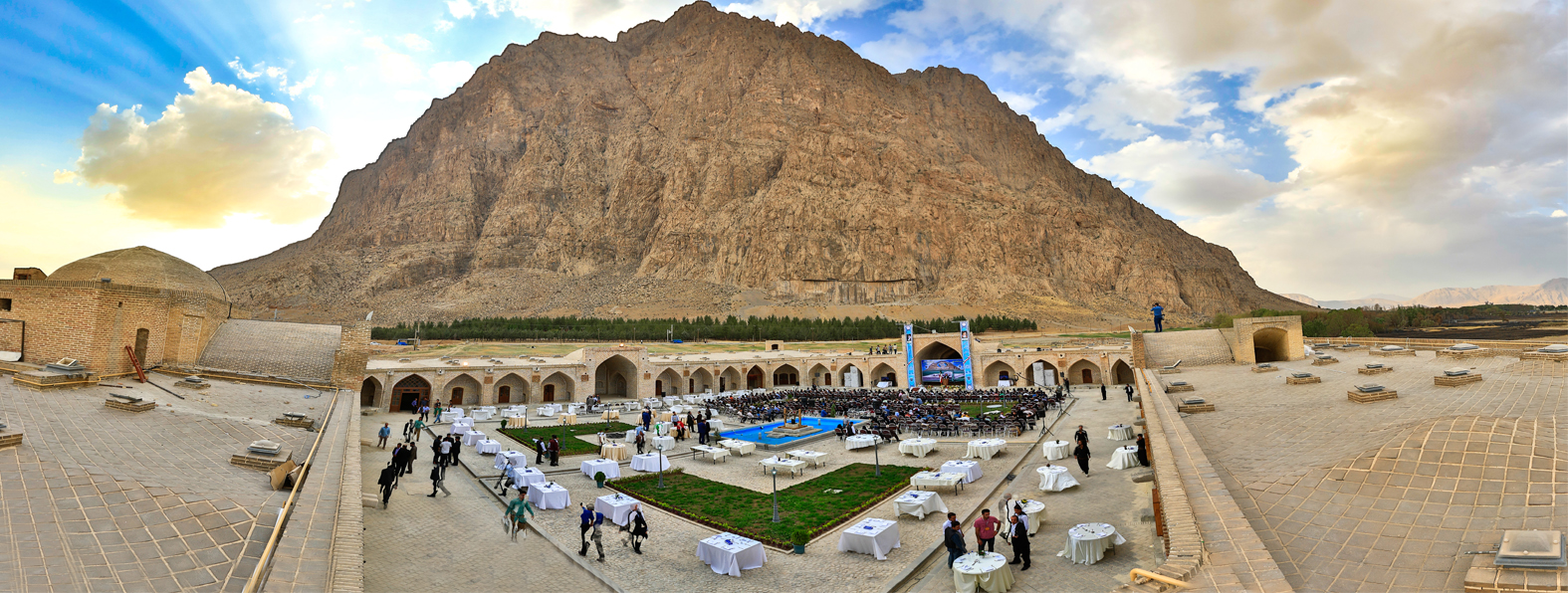Bistoon, Kermanshah, Iran
User Review
( votes)Bistoon, Kermanshah, Iran
The primary scientific studies regarding the engravements and inscriptions of Bistoon were made in 1835, by Henry Rawlinson, a young British officer. After which this research was carried on by several scientists who added their discoveries to this historical treasure. The text of this inscription was engraved in the breast of the mountain in 522 BC. by a decree from Dariush. The same relates to the war which lasted for two and a half years, between him and his opponents in order to gain power.
Encircling the Bistoon impression is an epigraph in three languages, named as, the ancient Parsi, Elamite and a Babylonian dialect. The Elamite text is to the right of the impression, the second to the left, running parallel to the Parsi text. Whereas, the Babylonian text stands above that of the second Elamite inscription. Additional and complete translations can be observed in the surroundings and to the right.
The ancient Parsi text is in 414 lines and engraved in a beautiful uniform script on a polished surface. In all the epigraphs of Dariush the Achaemenian begins with the phrase “King Dariush proclaims” and this is repeated throughout his decrees, emphasizing the grandeur and greatness of the power of this monarch. This sovereign owned his victory to Ahura Mazda and thus offered a religious effect to the epigraph to a great extent. This view can be noted and brought to light specially in the fourth column of the inscription
Pahlavi Script Inscriptions
Throughout Bistoon and its surroundings, wherever a sculptured stone or structure is present, scripts dating to the Sassanide era can be noted. Such as the 427 symbols engraved on stones in vicinities like the Safavid caravansary of Bistoon, the Safavid bridge on Dinvar Ab, the Khosravi bridge on Garmasiab, the caravansary edifice of Bistoon and the engravings on the rocks scattered in various sections of Bistoon. These symbols are similar to that of households, names of certain personalities, on even workshops (foundries) who were responsible for these sculptured effects
Bistoon (Sheikh Ali Khan) Caravansary
This caravansary is located in Bistoon and has four porches. The same has been built by Sheikh Ali Khan Zanganeh. Its building is in a rectangular in form. In its rectangular courtyard there are 47 rooms for travelers. The caravansary has 4 circular towers in four corners and 14 rooms along the entrance. With respect to the type of material used for construction, the structure dates to the Safavid era. But in its foundation, carved stones of the Sassanide period can be noted. In Bistoon other caravansaries constructed on different plans can be also observed. These are related to the late Sassanide and early Islamic periods
Arsacidian Goodarz the 2nd Inscription
To the east of the Miteridat embossment, on the same rock, is the engraving of one of his successors named as, Goodarz II (46-51 AD.). This Impression depicts the victory of Goodarz II on his rival Mehrdad, and also shows the presence of two riders armed with spears. In the hand of an angel is a wreath of flowers, which is a sign of victory. Behind Goodarz, is the engraving of one of his relatives. An archaic Greek inscription has mentioned the names of these two monarchs. Today only the name of Goodarz can be noted, as the other parts of the said inscription has been demolished
Parthian Miteridant Inscription
Under the Achaemanian inscription of Bistoon, is the archaic embossment of the Parthian that has come to light to date. The same is an engraving of 100 years BC. The same has come to reveal that the Parthian ruler of the time, selected the location of this impression in such a manner so as to make a distinct mark between the Parthian and the Achaemenian eras. As regards artistic measures, the said shows no sign of movement or technique, the latter is moreover primary. Those who are named in this inscription are recorded in the Latin or Greek script
Khosrow Bridge
Along the old road of Bistoon to Takht-e-Shirin and Sarmaj there are gigantic bases of the famous Khosrow Bridge. The construction of the Khosrow Bridge is attributed to Shah Khosrow Sassanid. The Khosrow Bridge is the only bridge that the Arabs crossed, and after passing through Takht-e-Shirin and Sarmaj went Nahavand and defeated Yazdgerd III, the last of the Sassanide rulers in that city. The Khosrow Bridge with the passage of time, has sustained abundant losses, in such a manner that in Safavid period this bridge was unusable. For this reason, at that time another bridge was built on the Dinvar Ab River, about 1 km. beyond the former bridge
Herkool Statue
Alongside the Bistoon – Kermanshah Road, is an embossment of a heroic figure leaning against a piece of lion skin. This embossment shows a completely naked and powerful man with curly hair and beard. He is leaning on his left side under the shelter of a tree. To its left hand side a cup is seen. In this impression, the right hand of the figure is placed on the right foot, whereas the left foot leans on the right one. The length of this statue is 147 cm. Behind the said statue, inscriptions and images can be observed in the ancient Latin or Greek script.
The same is very similar to that of the Grecian temples an impression alongside the inscription reveals a tree with a double pointed bow hanging on a branch, besides an archers sheath or quiver full of arrows also hanging from a branch of the tree. On the two sides of the platform on which the statue is located, a rampart of stone can be observed. The same is of non-sculptured stone and covered with gypsum
Faratash (Farhad Tarash) Inscription
To the south of the engraving of Dariush the Great, in the Bistoon Mountains, is a gigantic engraved rampart or wall, reputedly known as Faratash and Takht-e-Farhad by the inhabitants. It is said that the same was engraved by a decree issued by Khosrow Sassanide II approximately a millennium after the reign of Dariush. The inhabitants of this vicinity believe that the above mentioned engravings belong to Farhad (the sculpture or stone culture in this mountain).
This episode relates to a love story related to Shirin (the spouse of Khosrow Parviz) and Farhad. Needless to say, this theme is a pronounced one in many of the poems of the country. Nezami Ganjavi, the great poet being one of the prominent. The length of the Faratash rampart is 180 m. and it must be brought to attention that no where else in Iran or on its mountains, such a colossal engraving exists
Dariush Inscriptions
The above mentioned is an embossment on a rock, and the main feature depicted here is that of Dariush (Dariush). The monarch has a scalloped crown on the head, and his left foot rests on the chest of Geomat. Behind him are two bodyguards. Above the head of Dariush is the image of Farvahar in flight. Farvahar carries a circular band in the left hand, which is the sign of sovereignty. The same is offered as a token to Dariush. Facing Dariush are 90 rebels (of jurisdictions under the power of the sovereign).
These rebels have harnesses around the neck and their hands are tied. This epigraph of Dariush in the Bistoon mountains, alike others of the Achaemenian period, reveal the influence of the Babylonians and Assyrians art in the Achaemenian civilization
Parthian Temple
To the north of the Dariush engraving in Bistoon, are the remnants of a structure from the Parthian period. The same is a temple or a worshiping site built during the Parthian period, coinciding with the construction of another relic in Bistoon. This Parthian temple which is situated opposite the slab of Parthian impressions, comprises of two platforms. These platforms are connected to each other by 10 steps, which run irregularly right up to the Valgash inscription. On the upper platform is a sculptured brazier of stone. Evidences of earthenware of the Parthian era are noted in the surrounding skirts of the Bistoon Mountain
Refrence : (Click)






